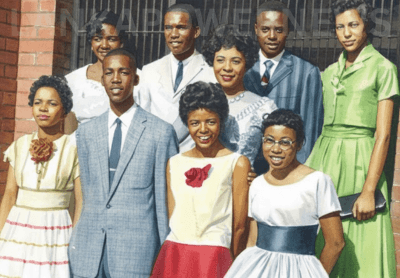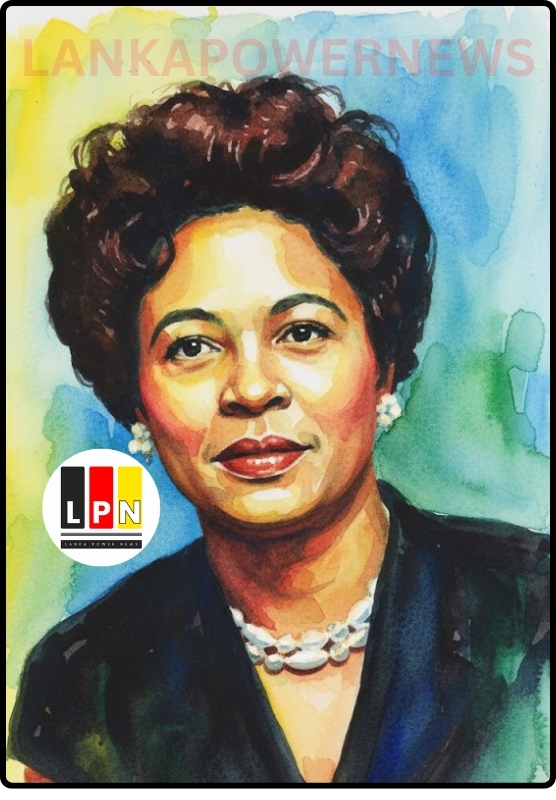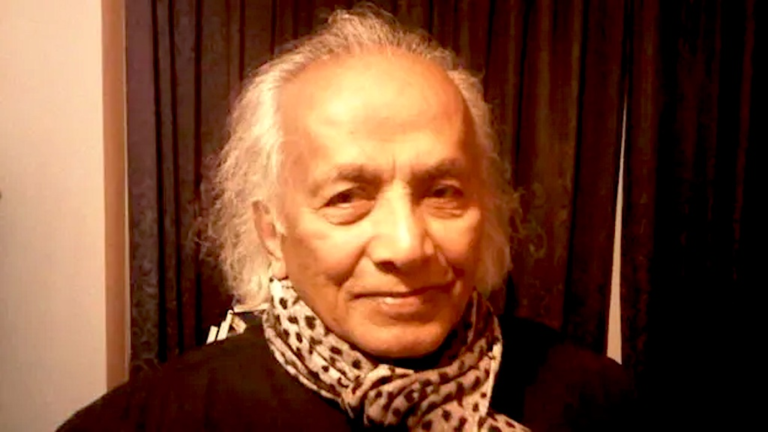Figures of Little Rock Nine..!
Governor Orval Faubus – Introduction
In September of 1957, State Governor Orval Faubus acted against the 1954 US Supreme Court ruling to desegregate all schools in America several times to prevent the nine black students (dubbed the Little Rock Nine) enrolled in Central High, Little Rock, Arkansas. He actively disregarded federal law and the President of America Dwight Eisenhower’s commands in favour of keeping Arkansas schools segregated.

Faubus’ Perspective
Governor Faubus of Arkansas exercised state forces in order to impede nine black students enrolled in a previously all-white school as extreme acts for the segregationist movement in order to win the favour of segregationists for re-election. Formerly politically considered as a ‘moderate’ (someone not either for or against segregation), Faubus made a sharp transition into catering to segregationists once accused of being in favour of integration, a stance that could possibly lose him the re-election due to the overwhelming anti-integration majority in Arkansas.

This behaviour is directly confirmed by the statements he made before the Little Rock Nine started at Central High, saying things like that blacks would face violent backlash and blood would be shed at Little Rock – all publicly announced. Faubus, like President Daisy Bates of the National Association for the Advancement of Coloured People (NAACP) Arkansas Chapter, was born and raised in the state of Arkansas, and being a white man attended his own segregated white school. White schools, unlike black schools, were well-funded and attended to, and likely allowed him to pursue his position as State Governor. Being a white, male Southerner, Governor Faubus’s perspective is channeled through the experience of living an unprejudiced life. This bias supports why it was so easy for him to convert quickly to anti-integration motives. For the benefit of his future career in politics, Faubus orchestrated multiple unconstitutional-by-law events.
Faubus’ Action
Faubus’s actions during the Little Rock Nine’s entrance and enrolment in Central High defined his role in the event as an obstacle for integration in Arkansas, but furthermore, an issue for the federal government and President of America, who recognised Faubus as a threat on a scale wider than just Arkansas. Governor Faubus acted on many personal decisions during the Little Rock crisis, almost all of which were unconstitutional and therefore illegal. This led to President Dwight Eisenhower himself intercepting to reverse or counteract his orders, and even attempting to convince Faubus to back down.
The most applicable example of this behaviour is when Governor Faubus ordered the State Guard to prevent any black children from entering Central High on Monday 4th of September, and again his involvement in organising the ‘School Closure Act’ of 1958-1959, preventing many children (both black and white) from attending school in protest of the Supreme Court overturning his integration-prolonging appeal. During the Little Rock Crisis, another major historical event was taking place – the Cold War. President Eisenhower likely held major concern for Faubus’ behaviour due to the impacts it could have on the war. Disharmony amongst Americans – States disobeying federal law and the Supreme Court – would give the Communists propaganda ammunition in convincing allies to join them (Eisenhower could be considered a moderate, but cannot be explicitly placed).
Therefore President Eisenhower ordered one thousand men from the 101st Airborne Division to escort the Little Rock Nine around campus during the school year, after removing the National Guard from Faubus’ control with a federal court order. The lengths in which Governor Faubus went in order to delay racial integration in the schools of Arkansas such as the use of the National Guard and the School Closure Act demonstrated his radical segregationist perspective.
Governor Orval Faubus Conclusion.
In conclusion, Governor Orval Faubus was the official responsible for prohibiting the Little Rock Nine from attending the high school they were legally enrolled in in order to gain the favour of the segregationist majority of Arkansas before the re-election. These actions resulted in federal interception, as they proved to be dangerous to America’s position in the ongoing Cold War.
Daisy Gatson Bates – Introduction.

President Daisy Bates of the NAACP Arkansas Chapter organised the Little Rock Nine and supported them through their enrollment at Central High in 1957. She protected them, mentored them and oversaw the strategies that the NAACP implemented in order for the integration of Central High to be successful. As the President of the National Association for the Advancement of Coloured People (Arkansas Chapter), her decisions were motivated by her goal of Arkansas’s schools being officially integrated.
Daisy Bates’ Perspective
During the Little Rock Nine Crisis of 1957, President Daisy Bates protected and advocated for the Little Rock Nine during their stay at the heavily racist high school, from organising and escorting their group’s arrival on the first day, to bringing their case to the Supreme Court the multiple times the Brown v. The Board of Education ruling was ignored by Governor Faubus. As a lifetime Activist who ran a solely Civil Rights centred newspaper with her husband, L.C. Bates, going on to become President of the NAACP’s Arkansas Chapter, Daisy was relentless and motivated toward the desegregation of Arkansas’ schooling system.
She arranged the applications and selection process of the nine black students, later frequently driving the students to school and even joining the Parent Organisation. President Bate’s dedication to the cause is evident in her past involvement in the desegregation movement. Since the 1954 Brown v. The Board of Education ruling, she gathered black students to enroll in white schools, promoting those who accepted them in her newspaper. And when offered the task of applying students to Little Rock by NAACP, she readily accepted it. Personal context to this drive and motivation can be traced back to her childhood, where she was unfortunately exposed to the harshest realities of racism when her mother was killed by three white men.
She was only three years old when the incident occurred, but it set her dedication to activism against racism in stone. Being a part of changes such as the Brown v. Board ruling motivated her to strive towards further success. President Daisy Bates was motivated to lead the efforts on the integrationist side of the Little Rock Crisis due to her lifelong commitment to activism and her personal connection to racism’s horrors.

https://sites.wp.odu.edu/civilrights/wp-content/uploads/sites/13907/2019/04/cropped-march_on_washington_cropped.jpg
Daisy Bates’ Action.
While Governor Orval Faubus fought against integration in schools, President Daisy Bates and her NAACP Chapter retaliated in a legal, professional yet effective fashion, which paved the way for future Civil Right battles. As the Chapter President of a civil rights organization in the South of America, President Bates overcame many obstacles in order to advance her and her association’s goal. But, it is in the method of how she fought injustices that speaks truth to her perspective. In 1958, a petition was granted by the Arkansas court to suspend integration under the excuse that it was being broken down by mass amounts of backlash. Daisy Bates and the NAACP brought this case to the Supreme Court, where it was overturned.
The decisions of how Bates and her colleagues tackled the issue demonstrates their approach to the issues surrounding them: to firmly but peacefully counteract. As an already disadvantaged group, the losses that extreme activism could bring would be heavy, as it would give racists reason to react in any way they saw fit. President Bates’ response to Faubus’ actions (such as the Suspension Petition case) was professional, strategic and controlled, traits of peaceful activism that set tracks for the rest of history and represented Bates’ values.
Daisy Bates’ Conclusion
President Daisy Bates of the NAACP Arkansas Chapter was an invaluable individual considering the Little Rock Nine Crisis, from the initial assembling of the nine, to constant support and encouragement, and crucially, defence against forces such as Orval Faubus, with intent to defy constitutional laws in favour of catering to the majority. She paved the way for many.







